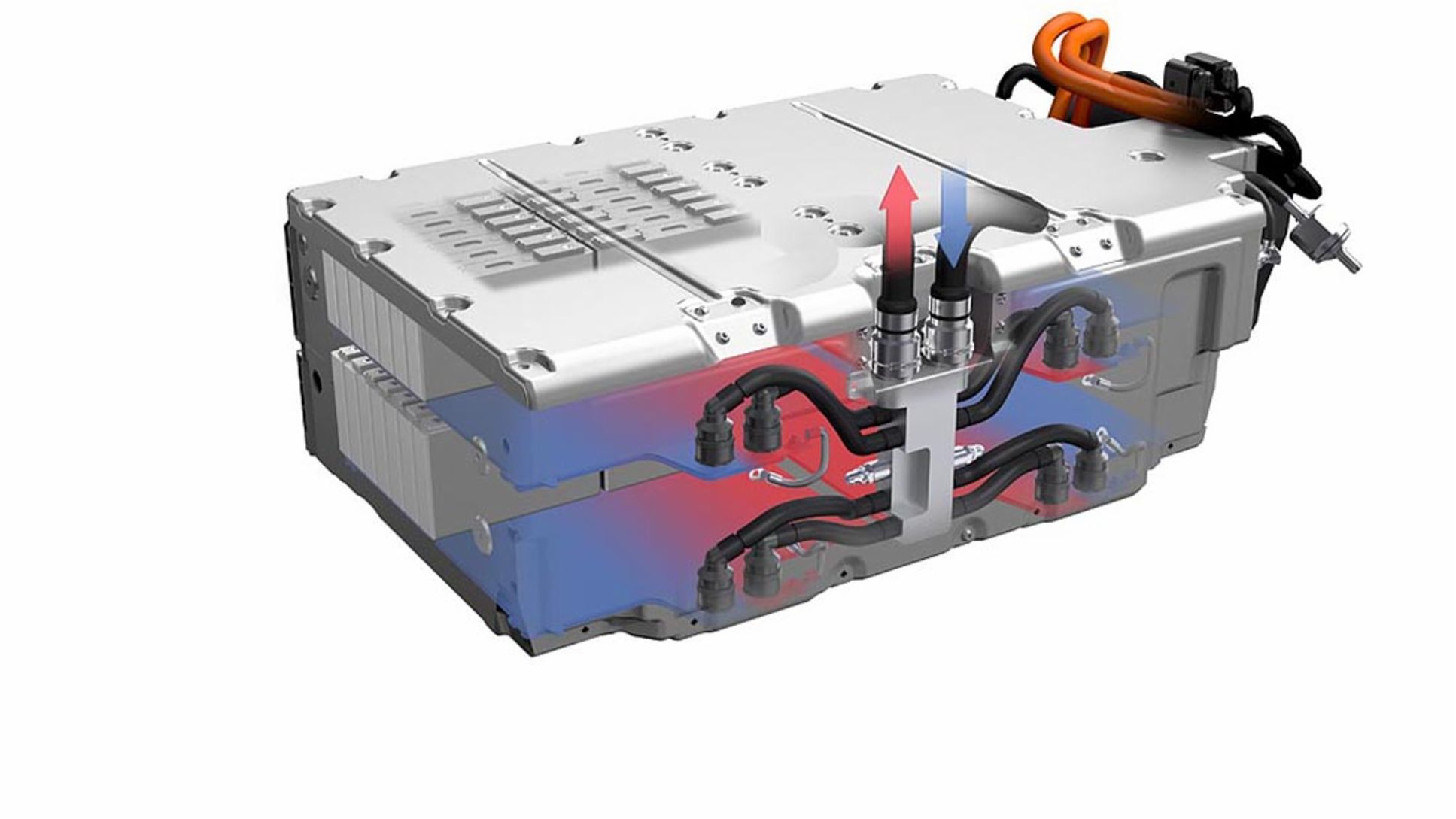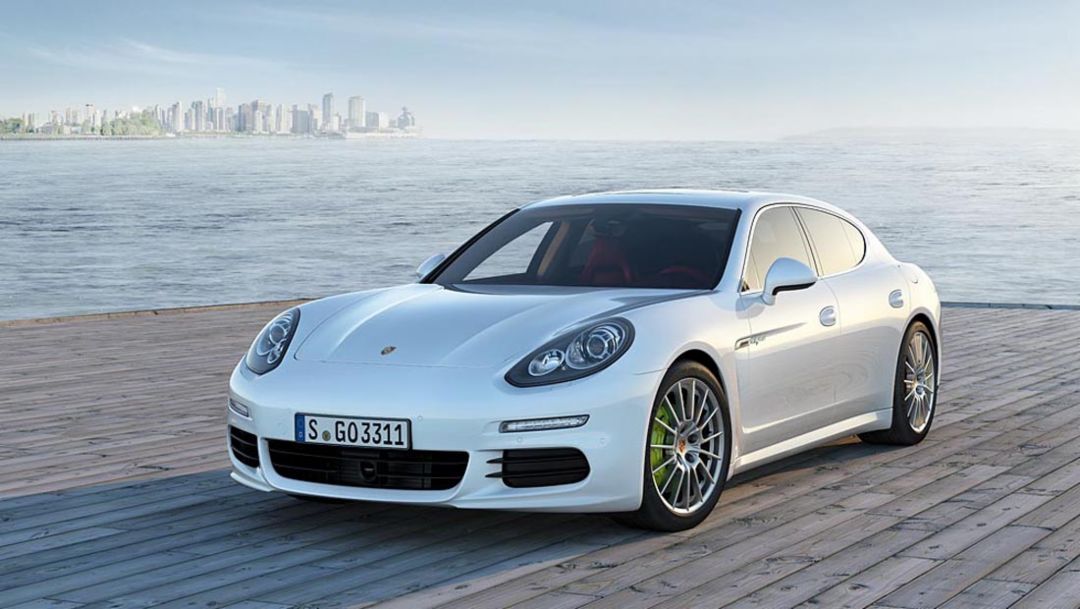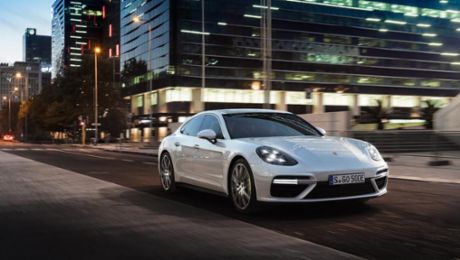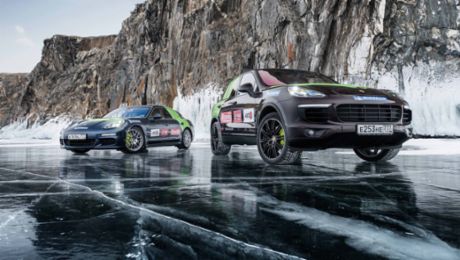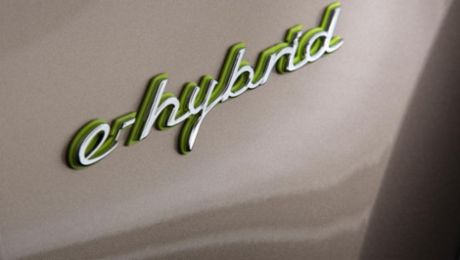Infrastructure and its control - from the charger to peripheral equipment for the new battery concept as well as high-voltage management and the improved power output of the electric motor: wide-ranging new developed. Consequently, one of the most challenging core tasks in the process of creating the new Panamera S E-Hybrid was to generate electrical and electronic structures that could handle these higher electrical power levels and extended functionalities.
The core element of the new hybrid drive is the newly developed high-voltage battery based on lithium-ion technology, which is integrated in a space-saving location beneath the boot floor. This is the same mounting space that was used for the nickel metal hydride battery of the previous model. The primary advantage of lithium-ion technology is its high energy density of 70 watt-hours per kilogram. But its power density is also high at 896 watts per kilogram, which enables a high level of electrical performance.
The high-voltage battery consists of 104 prismatic cells, distributed among eight modules of 13 cells each, and it has a nominal voltage of 384 Volts. It has a nominal energy capacity of 9.4 kilowatt-hours, of which 7.5 kilowatt-hours are used for the drive system. The new battery is designed so that it can output a maximum power of 120 kilowatts for a period of ten seconds – significantly more power than the electric motor consumes at its peak power.
The battery is surrounded by a cooling jacket and is coupled to the air conditioning loop via a dedicated evaporator. The refrigerant flow is routed through the battery pack by a system of lines; this effectively removes excess heat to keep the cells within the ideal temperature range of 20 to 44 degrees Celsius. A separate auxiliary electric heater was installed as well to operate the battery in winter temperatures. The battery is maintenance-free, and there are no wear parts.
Porsche has developed an entirely new plug-in charging system to supply energy to the battery. A Porsche Universal Charger (AC) by Porsche Design is supplied as standard with every Panamera S E-Hybrid. It is used to connect the vehicle to the electrical grid. This charger comes with two standard supply cables: one for household electrical outlets, and the other for connecting to industrial or heavy-current electrical outlets. Two integrated LED charging indicators inform the user of the charge status and connection status. The charging time is primarily determined by the power handling ability of the on-board charger. In the charger, the AC current from the infrastructure is converted to DC current that can then be stored in the high-voltage battery. The charging power in the Panamera S E-Hybrid is 3.6 kW. It can be fully charged in just around two and a half hours (at 16 Amperes) or in less than four hours (at ten Amperes), depending on the electrical connection.
Two and one-half hours charging time
The energy output from the battery to the electric motor is handled via the power electronics. It consists of a pulse controlled inverter and a DC converter (DC/DC). The inverter converts the 384 Volt DC voltage of the high-voltage battery into three-phase AC current with variable amplitude and frequency for the electric motor. When the motor is operated as a generator in a recuperation phase, the sequence is reversed. The DC converter is used to supply the 14-Volt vehicle electrical system with energy from the high-voltage network.
The pulse controlled inverter, charging cable and Hybrid Manager unit that is mounted on the electric motor must handle very high electrical currents. The voltages at the electric drive unit are between 280 Volts and 430 Volts and currents are up to 450 Amperes. That is significantly more than the entire power supply for a single-family home. The power electronics controls the synchronous motor by a pulse-width pattern. Its drive control is based on the field-oriented control principle. In what is known as an armature adjustment range, the motor can be controlled up to around 2,200 rpm via the voltage in the armature. Then the electric motor is driven with field-shunting control, i.e. by reducing the excitation flow.
As much energy flow as in a single-family house
As in the previous model of the new Panamera S E-Hybrid, the brake system recovers braking energy that would otherwise be lost and feeds it into the high-voltage battery (electrical system recuperation). In this system, the brake unit is designed such that in all positions within tolerance limits, recuperation is regulated up to the maximum before the hydraulic braking action begins. Compared to the previous model, this characteristic map was adapted to the more powerful electric motor and further optimised for driveability and pedal feel. This means that at speeds under approximately 40 km/h the braking energy is practically fully recoverable and can be stored in the form of electrical energy.
Consumption data
Panamera S E-Hybrid: Combined fuel consumption: 3.1 l/100 km; CO₂ emission: 71 g/km; Electricity consumption: 16.2 kWh/100 km
Panamera: Combined fuel consumption: 10.7 – 8.4 l/100 km; CO₂ emission: 249 – 196 g/km
